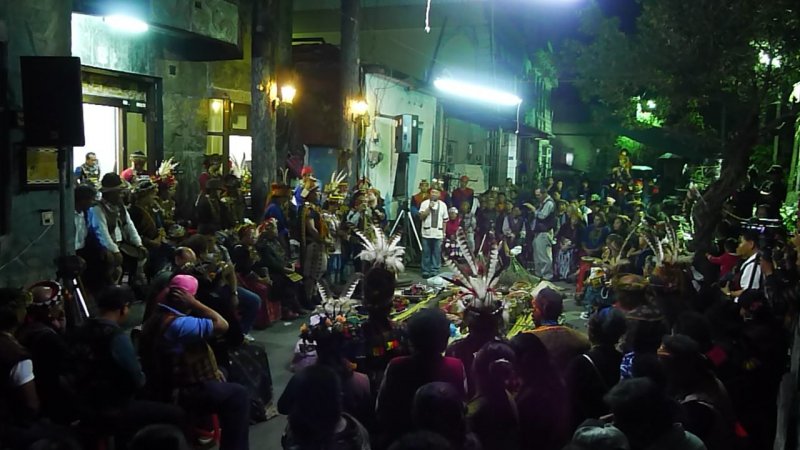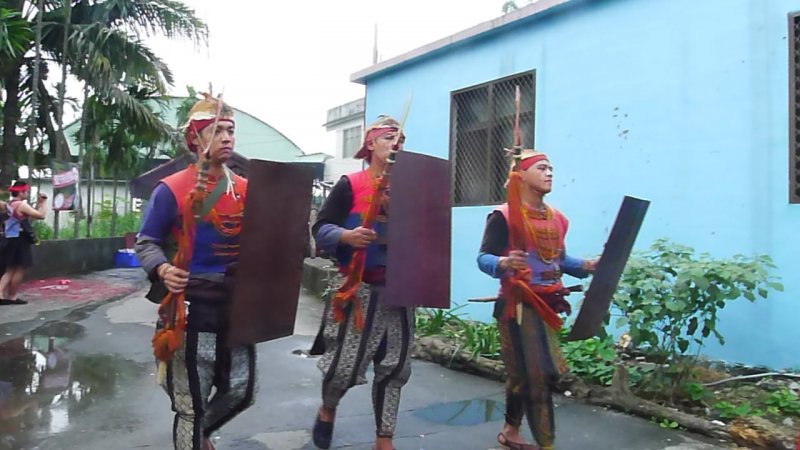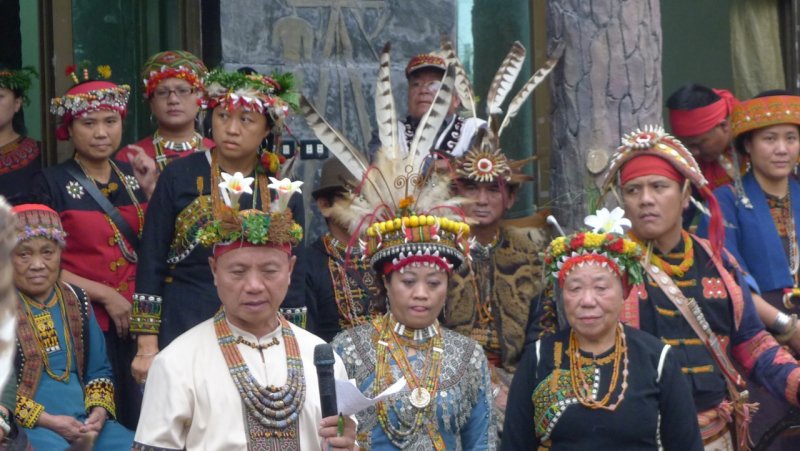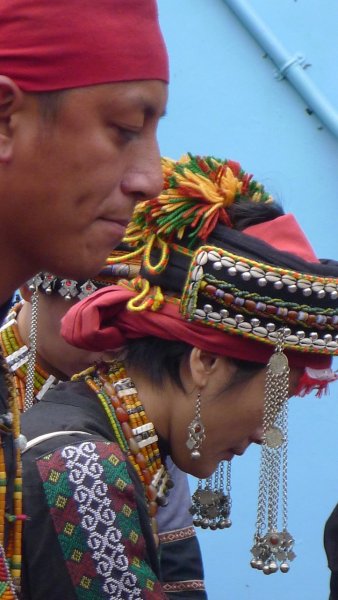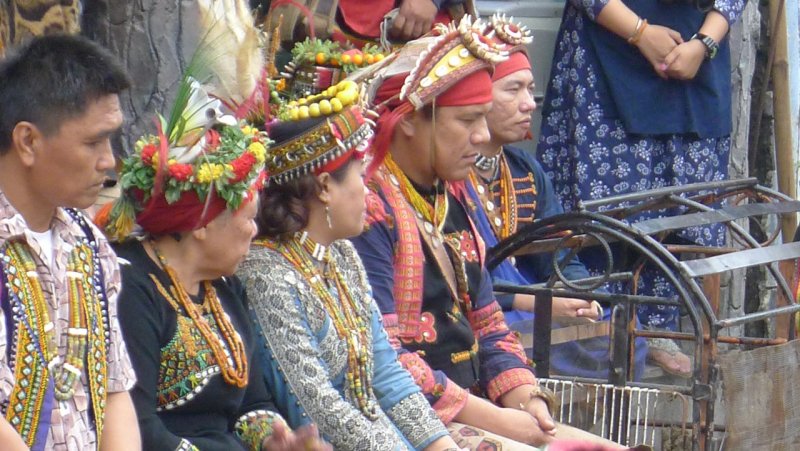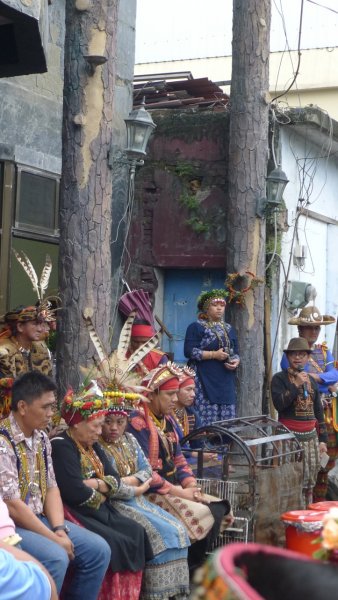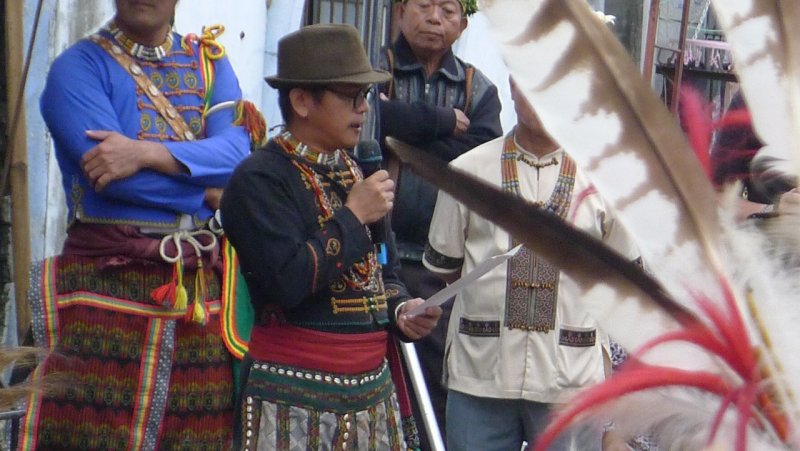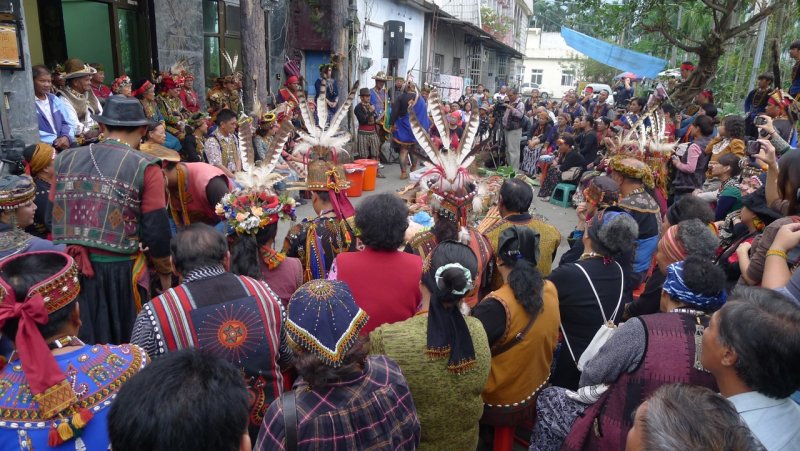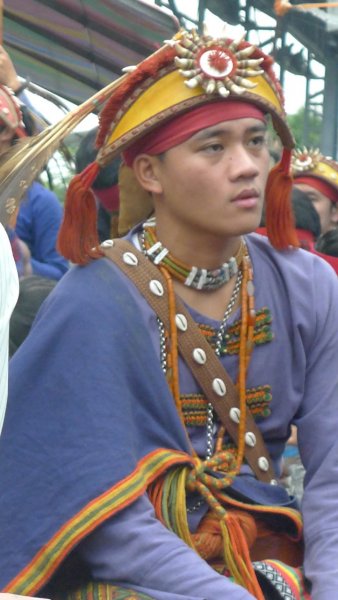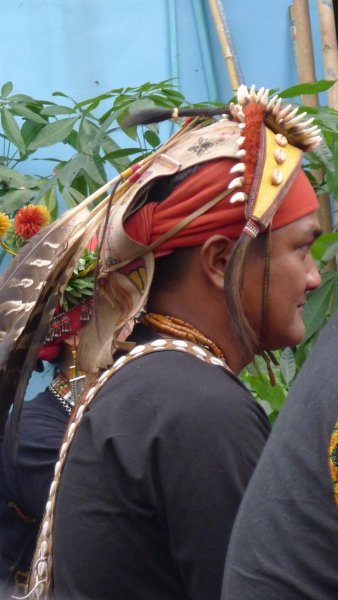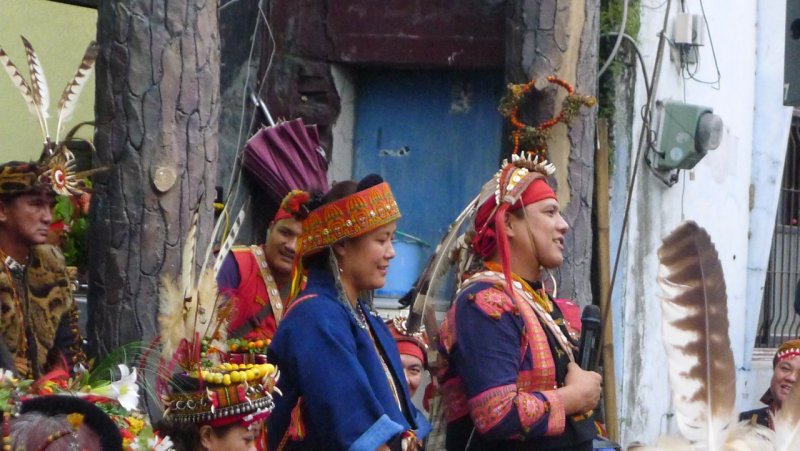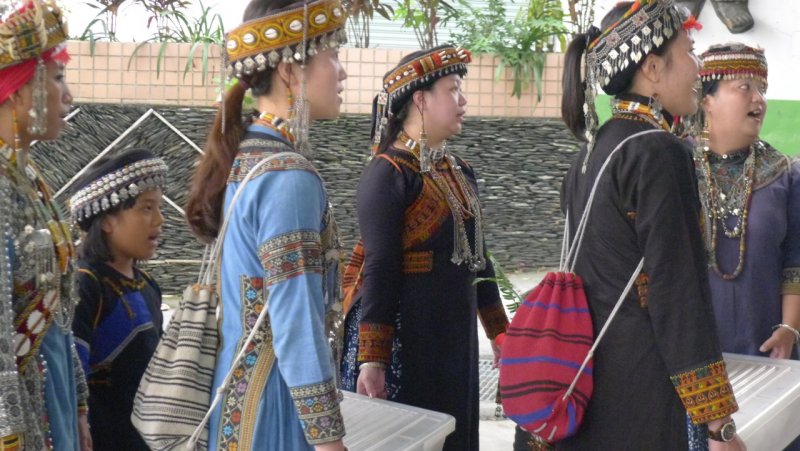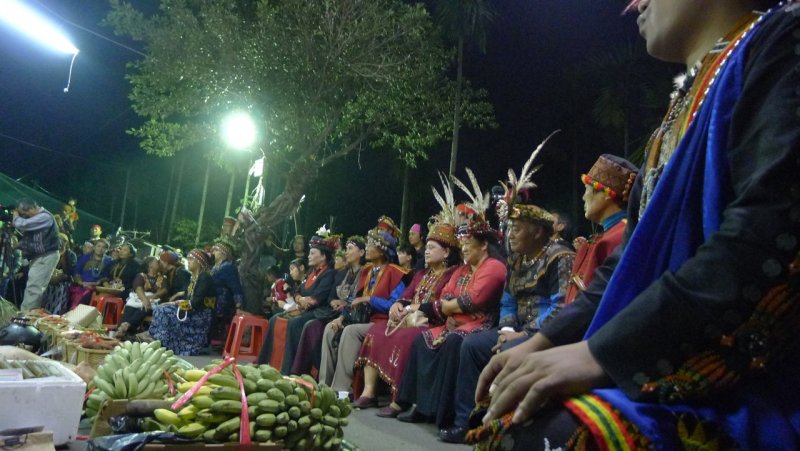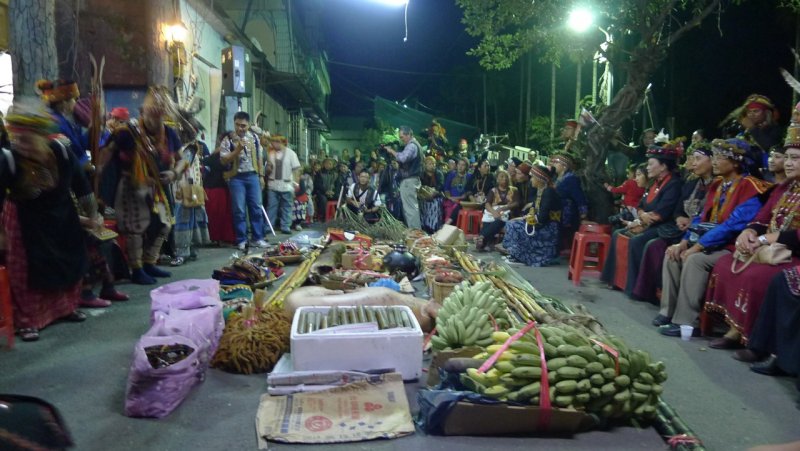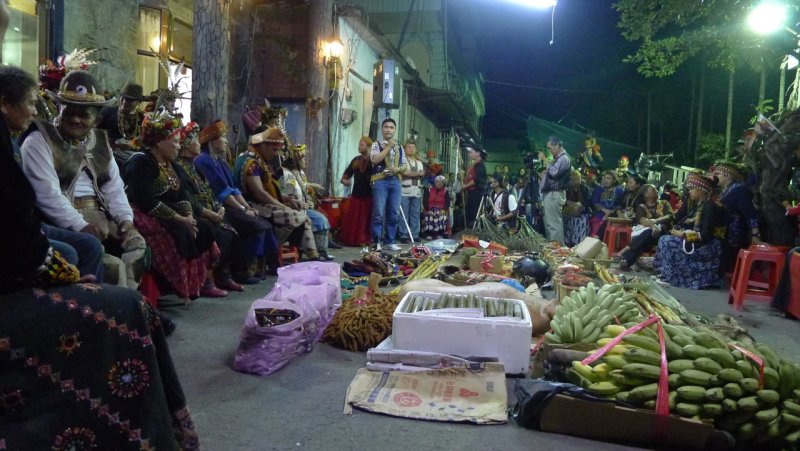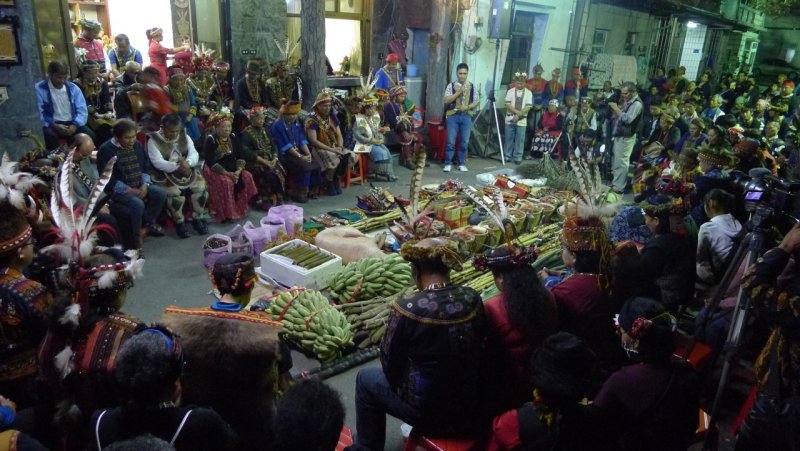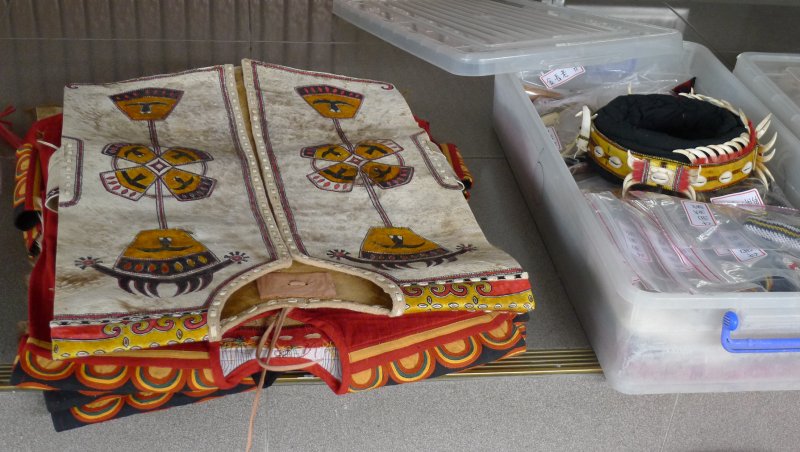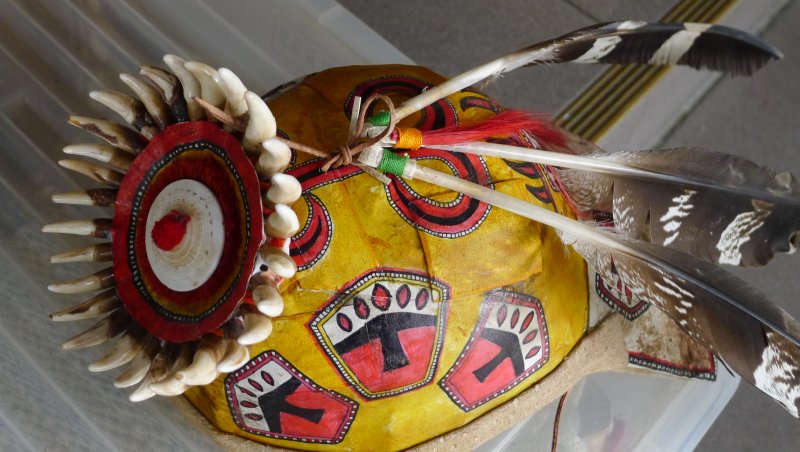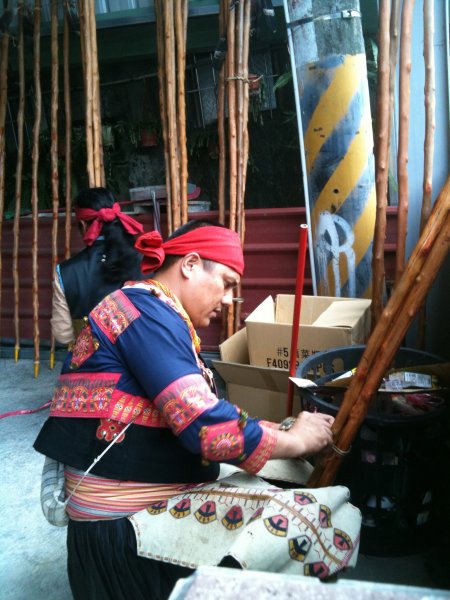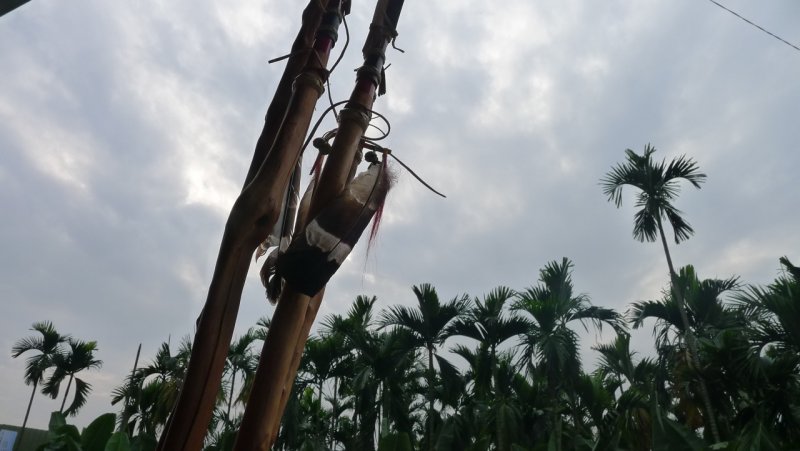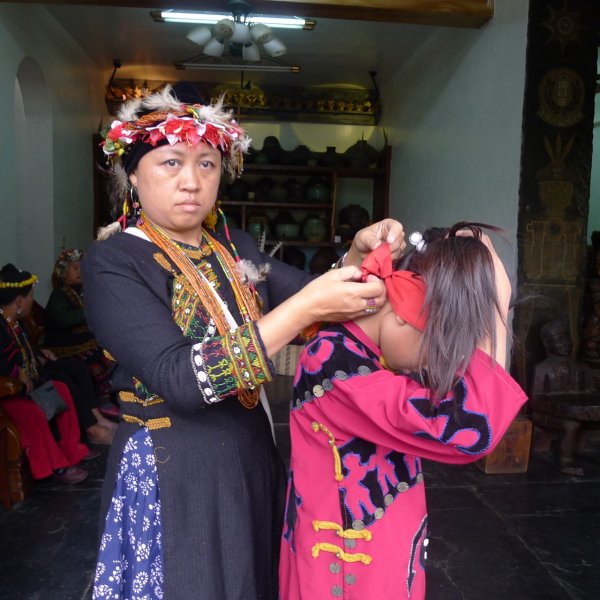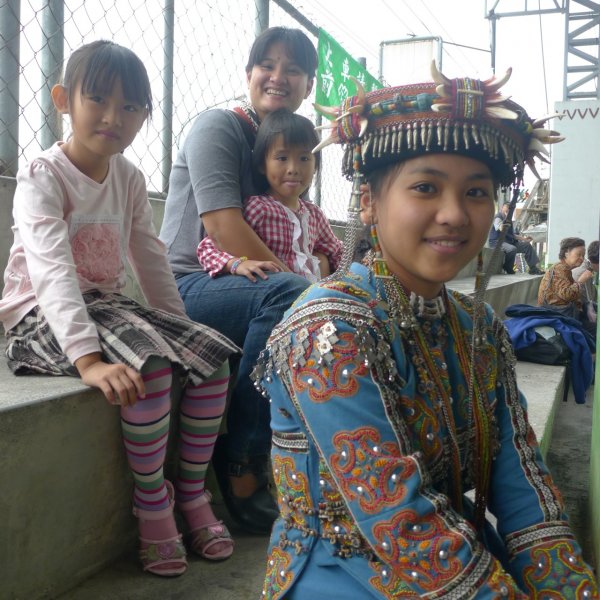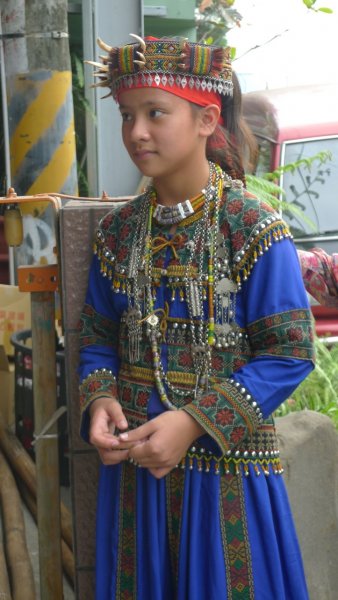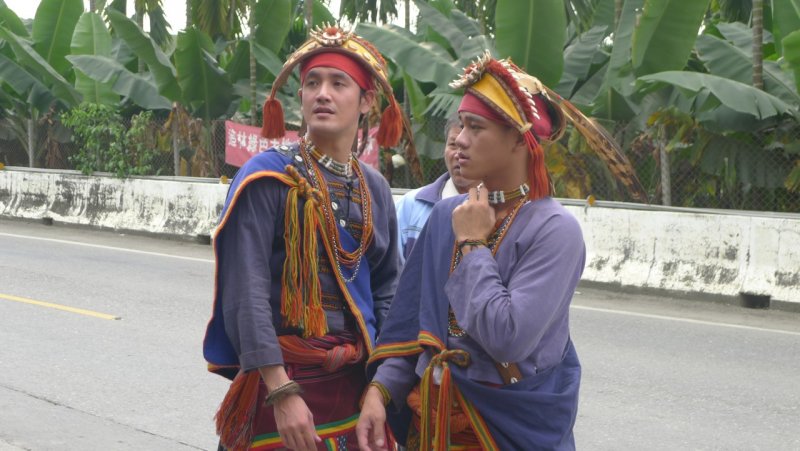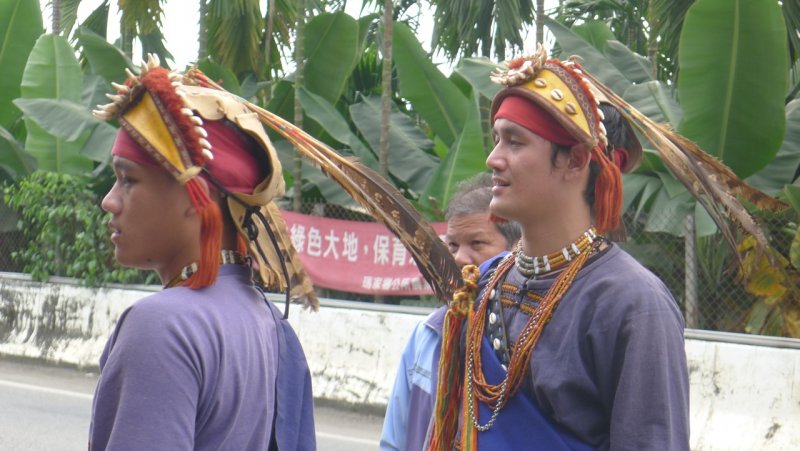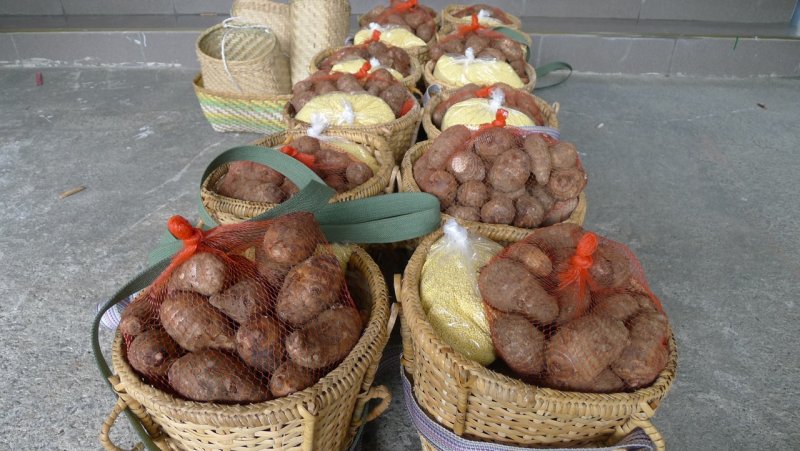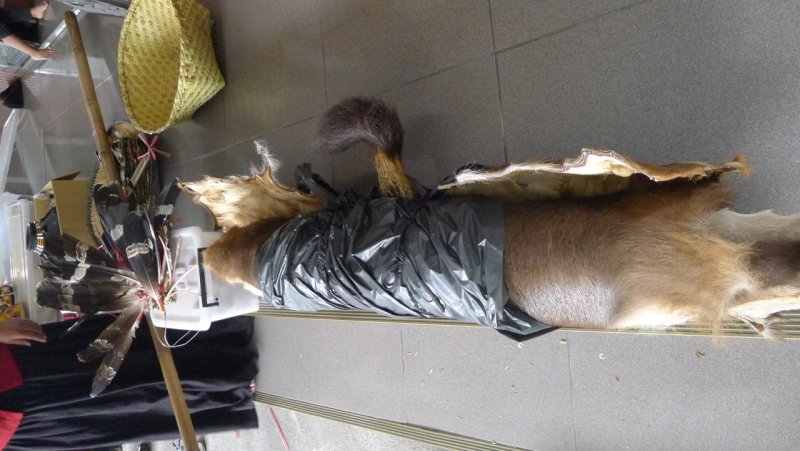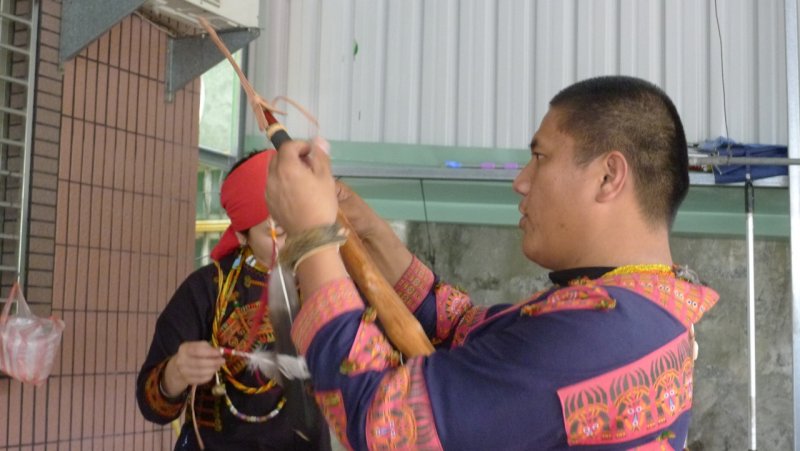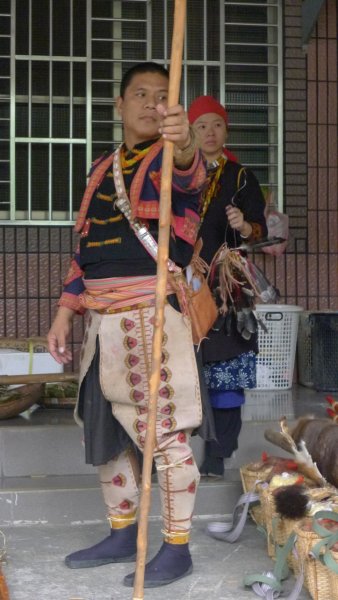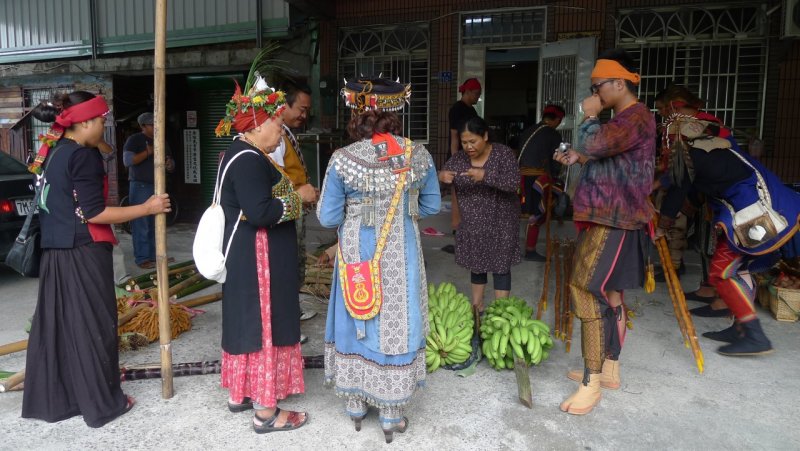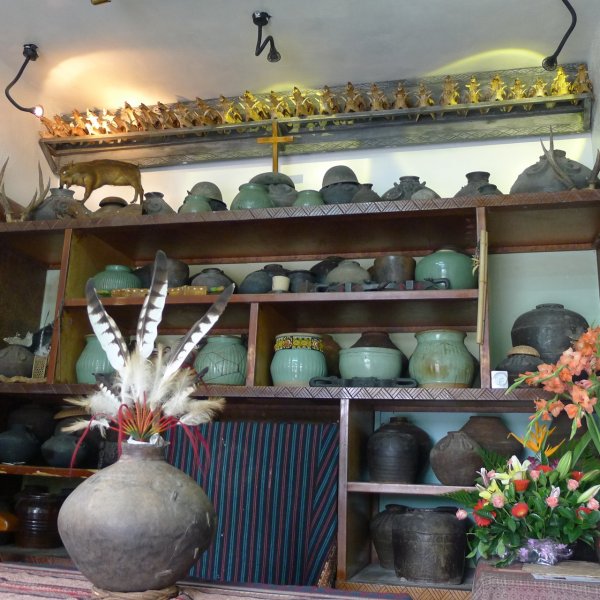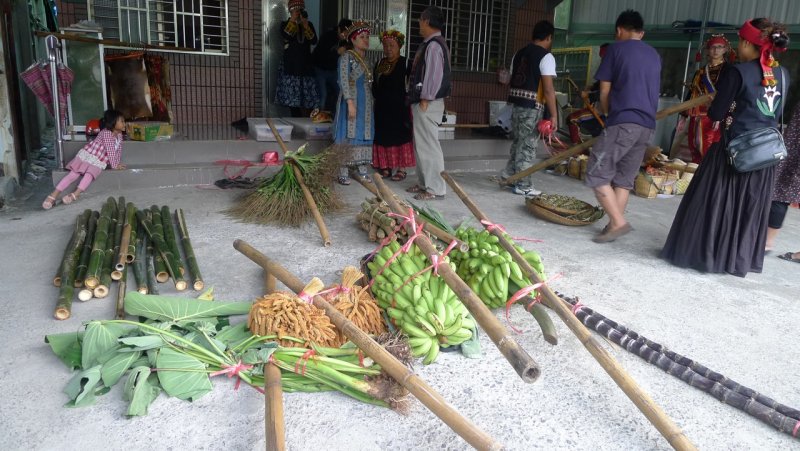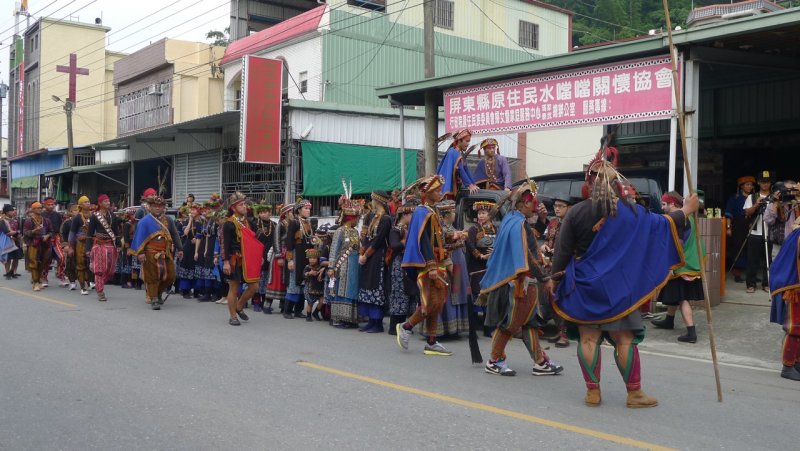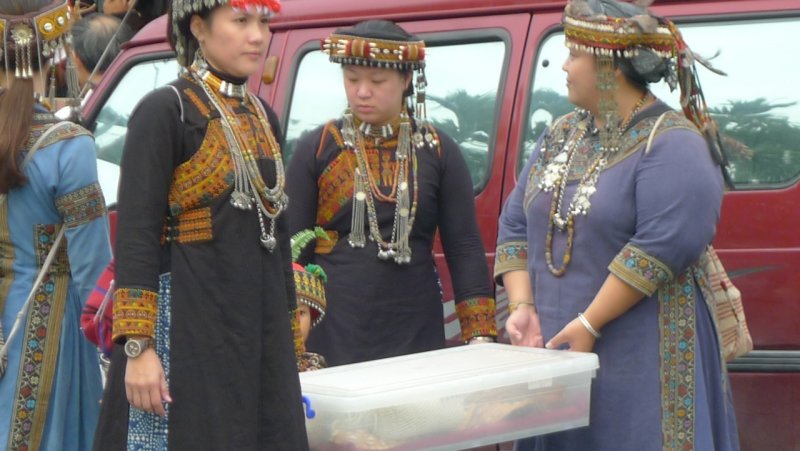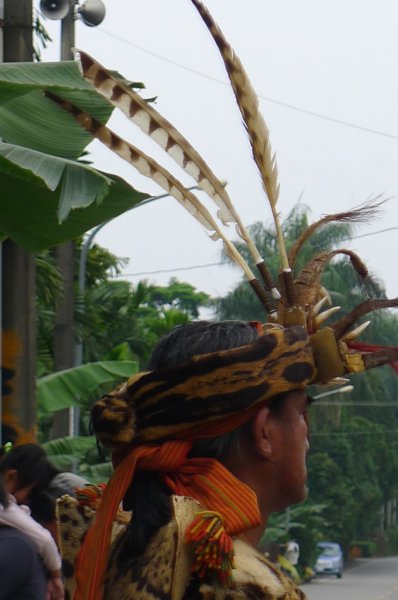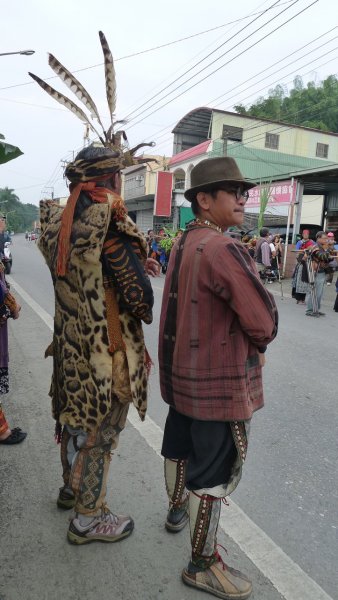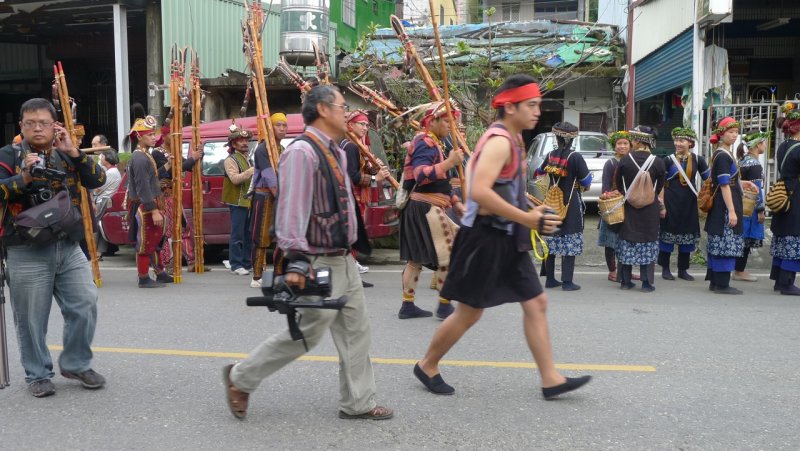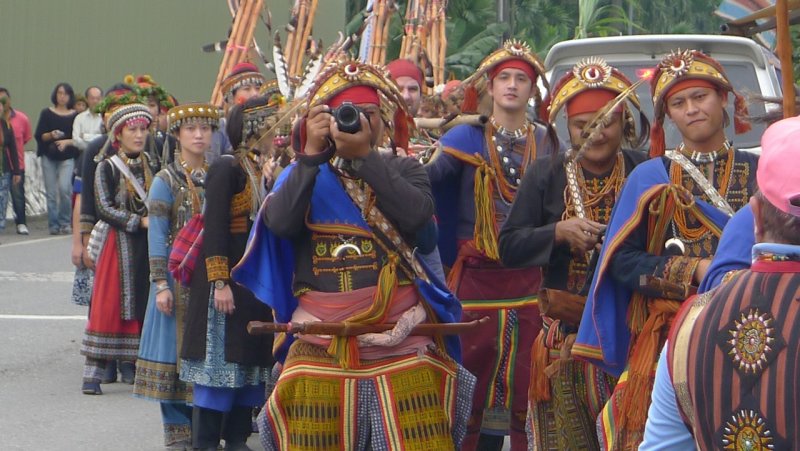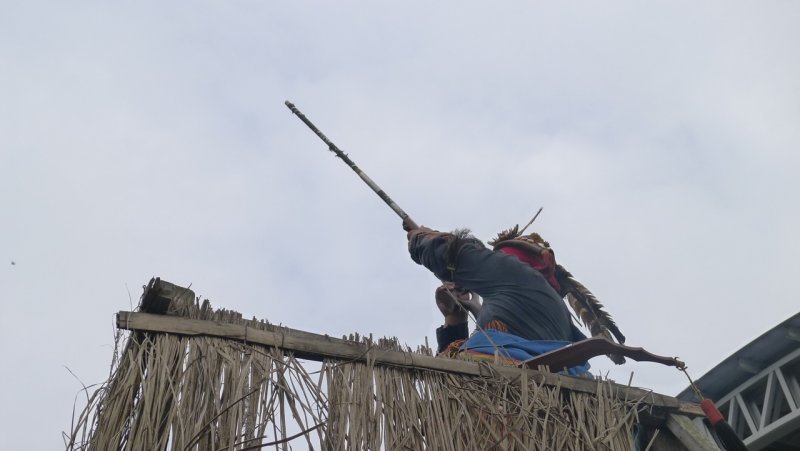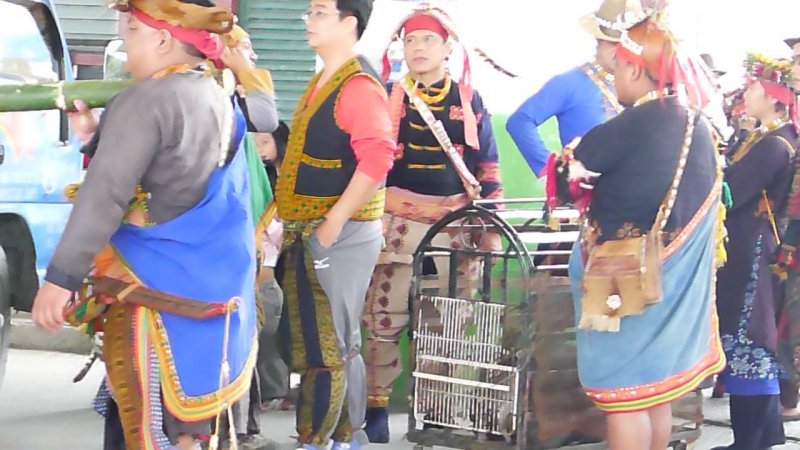This ceremony took place in a Paiwan village in Pingtung county. It was a rare event where a chief and a commoner joined as sworn family.
The following explanation of Paiwan culture comes from the Pingtung government website. The text is copied here for the convenience of the viewer. For the full explanation, click here. http://www.pthg.gov.tw/en/CP.aspx?s=1110&cp=1&n=10683
Clay Pot
In the ancient times, a hundred-pace snake lay an egg in a clay pot. The pot was basked in the sunshine, and broke into two, and a boy came into being. The boy was brought up by a family in the tribe, and later he became a chief. For this reason, the Paiwan people view the sun, hundred-pace snake and clay pot is the symbol of a chief. Clay pot is highly viewed as “chief’s ancestor”, and it is classified as Yinyang pot, female pot, male pot and human-body pot. The pot with hundred-pace snake lines is called male pot, and with raised lines called female pot. Yinyang pot is with both lines of male pot and female pot, the most respectable pot, called DeDedan by the tribe people. They are placed at two sides of middle column at home, outsiders are not allowed to touch them because they are the most sacred place, and will be used as a significant betrothal gift.

Ornaments
Ornaments in Paiwan tribe are mostly for the use of aristocrats. Natural ornaments are fresh flowers, feathers, furs, beast teeth, eagle feathers leopard teeth, and leopard skin. Lazurite beads, shells are only for aristocrats too. Each one should have his or her own embroidered-edge garments, decorative girdles, and embroidery towers, which should not be transferable. Other ornaments are head ornaments made of silver, copper, shells or flowers, shoulder ornament, chest ornament, back ornament, wrist ornament, finger ornament, and son on.
Costume of the Paiwan tribe and the Rukai tribe can be said gorgeous among aborigines in Taiwan. Colors and patterns have been shown differently to express social status and levels. Chief wear darker clothes with embroidery of insects and common people are not allowed to do so. The use of ornaments are mostly limited to aristocrats.
Sakinu’s party brought many offerings (food, armory and ornaments) to the Chief’s family.






Everyone of any significance came dressed in their finest regalia.







